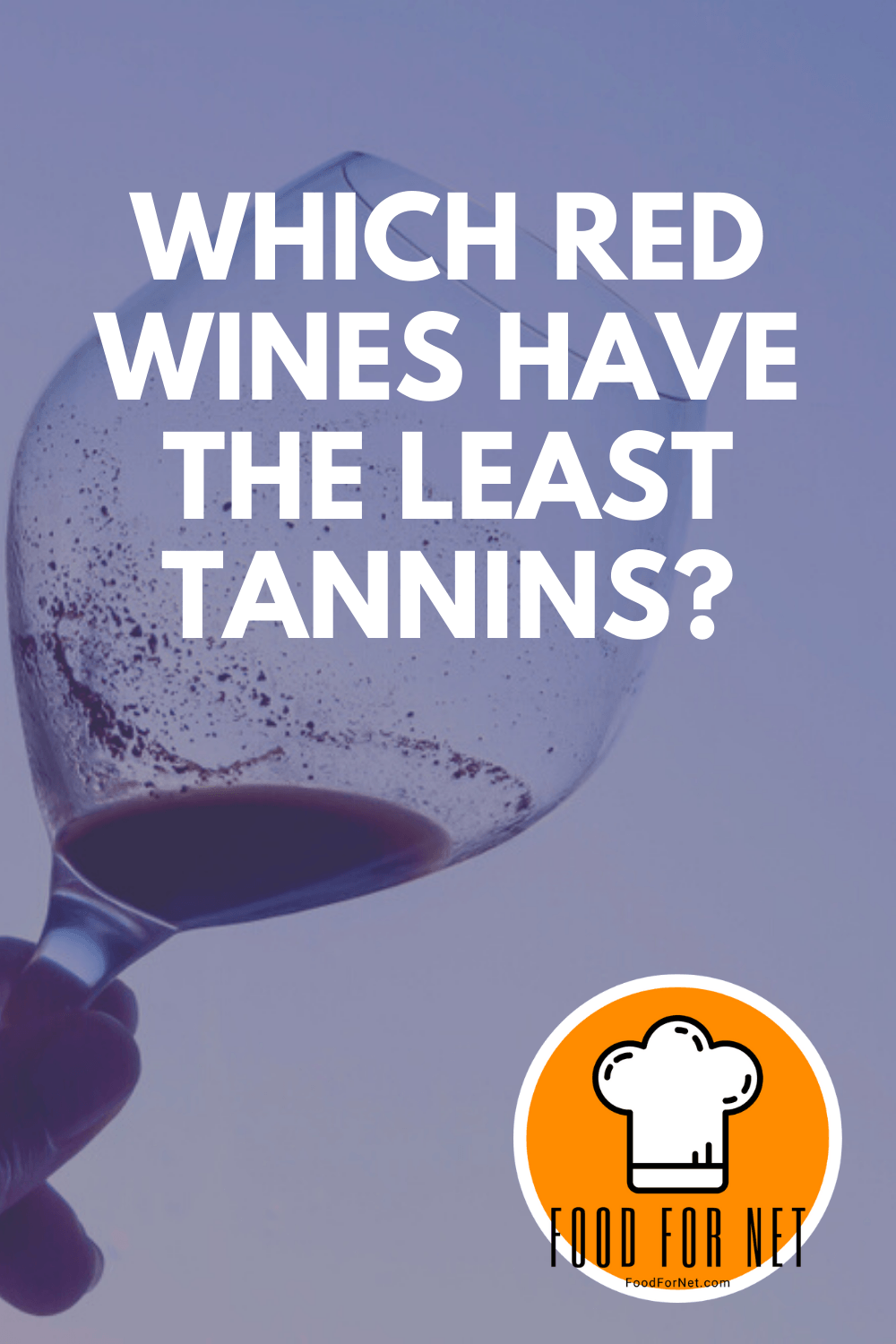
Tannins are often a desirable flavor component in wines, but not every wine has tannins, and not every wine drinker enjoys them. Whites and rosés are popular for having low tannin content, but which red wines have the least tannins?
Whether you’re just not in the mood, want to try something different, or hate tannic wines in general, this list of low-tannin styles of red wine will help you pick the perfect bottle. But, before we get into that, let’s talk a little bit about tannins themselves.
Tannin is a polyphenol that’s commonly found in plants. It exists on leaves, fruits, and even seeds. To put that into perspective, up to half of a plant’s leaf makeup can consist of tannins. When it comes to wine, the tannin content can vary considerably, typically influenced by the type of wine, the specific grapes used, and even how the wine was stored during fermentation.
In particular, white wines contain barely any tannins – the process of removing the grape skin before the process gets rid of most of the substance. On the other hand, red wines have more prolonged exposure to grape skin and have a lot more tannins as a result. After all, most of the tannins in grapes do come from the skin.
When it comes to storage, the material used to store wine can affect its tannin amounts as well. Wooden barrels are the main culprit of this, as the tannin found in the barrel’s wood can break away from it and end up together with the wine. So even if you order yourself some white wine, there’s a chance that it may have more tannin than it usually does due to how it was stored.
In short, red wine will generally have more tannins than its white counterpart. Fortunately for red wine enthusiasts, there are ways to mitigate the amount of tannin in red wine.
Aside from staying away from brands that store their wine in wooden barrels, a common workaround to enjoying tannin-low red wine is by buying red wine that uses thin grape skin. As the skin can contribute a lot to the wine’s overall tannin levels, thin skins are ideal as they simply contain less of the substance.
With that in mind, we’ve prepared a list of some red wine options that follow at least one of these methods, and as a result, are low on tannin.
P.S. Want to know more about tannins? Check out our post on the potential side effects of tannins.
Which Red Wines With The Least Tannins? (With Pictures!)
Pinot Noir
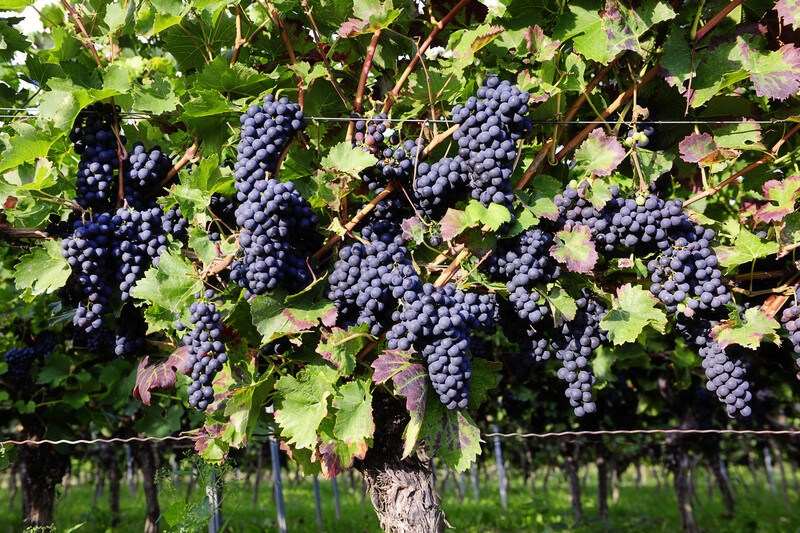
Adding this wine to the list was a no-brainer. Known as one of the most popular red wines for its light taste and reasonably low tannin levels, Pinot Noir is a wine variety that is said to originate in Burgundy, France, which is probably why most of its grapes come from France as well.
The grape is quite versatile, as it can be used to make not only red wine but also rosé, white, and sparkling wines. It’s such a popular wine that a Pinot Noir Day exists, which occurs every 18th of August.
In terms of taste, Pinot Noir has hints of raspberry and cherry flavors, as it is fruit-forward. It goes great with many dishes as its low tannin levels make it easy to drink with just about any meal.
Pinot Noir is low in tannins because the grapes have such thin skins. This is also why the wine is very easy to drink, without less strength of flavor than many other reds. In fact, pinot noir tends to be light and fresh, making it an excellent wine for pairing.
Barbera
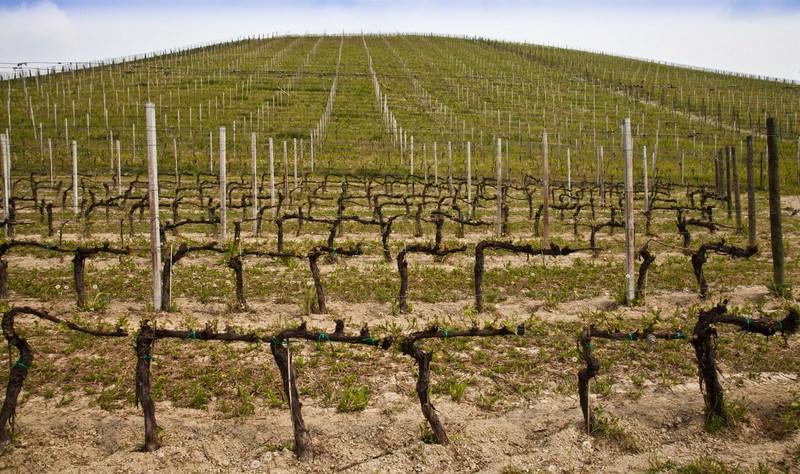
Barbera wine is one of Italy’s many prized wines, though it’s starting to see cultivation elsewhere in places like California. It’s said to have been around since the 7th century, making it one of the older varieties out there. The grape is grown on large vineyards in numerous quantities and is usually stored in large oak barrels.
Barbera is a lot more acidic than other red wine varieties and combined with the fact that its taste is reminiscent of strawberry and cherry, it ends up tasting quite juicy. While the tannin levels in Barbera are low, the oak barrels that store it can end up adding some of the substance to it, so keep that in mind.
Schiava
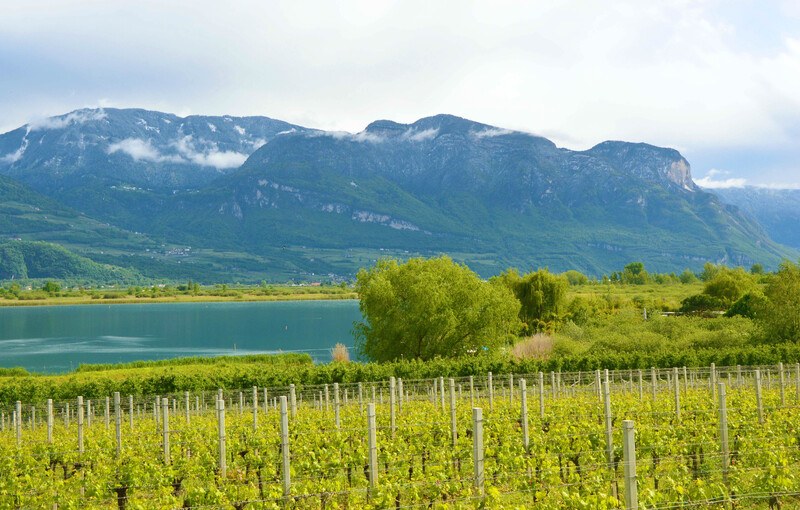
Schiava isn’t nearly as well-known as pinot noir, yet the two reds share a number of characteristics. Schiava is also known as one of the lightest and sweetest red wine varieties out there. Schiava’s nickname as the “cotton candy wine” exists for good reason.
It comes from the Schiava grape and is known in other countries as Trollinger, Vernatsch, and Black Hamburg. It’s grown in Italy and has been under the radar for quite a while as it just wasn’t as strong in terms of flavor as its competitors, though that characteristic is what gave the grape a surge in popularity in recent years.
Schiava tastes like cotton candy and contains hints of fruit and berries such as strawberries. Alcohol levels in the wine aren’t relatively high, though, which could be appealing or unappealing, depending on the circumstances.
Dolcetto
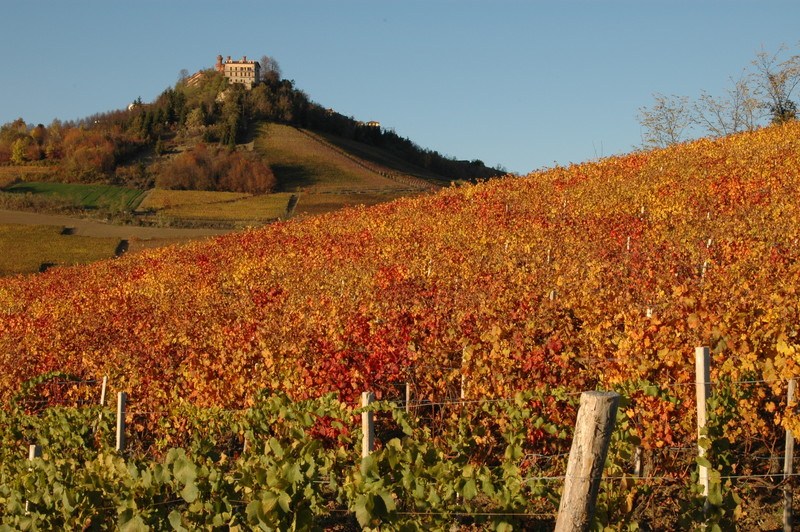
Dolcetto is another North Italian wine grape that’s recognized by its dark skin.
The grape also isn’t too picky about temperature, which means that it can be cultivated in higher altitudes and cooler calamities. The ability to do so promotes the wine’s overall acidity levels.
Dolcetto is currently being developed to become a grape that can turn into fruity and highly alcoholic wine at the same time. Along with its short ripening cycle, it’s become a popular and common wine in recent years.
The wine made from Dolcetto is exceptionally powerful and has a short cellaring lifespan. You’ll want to consume it within a few years of vintage for the best experience.
Gamay
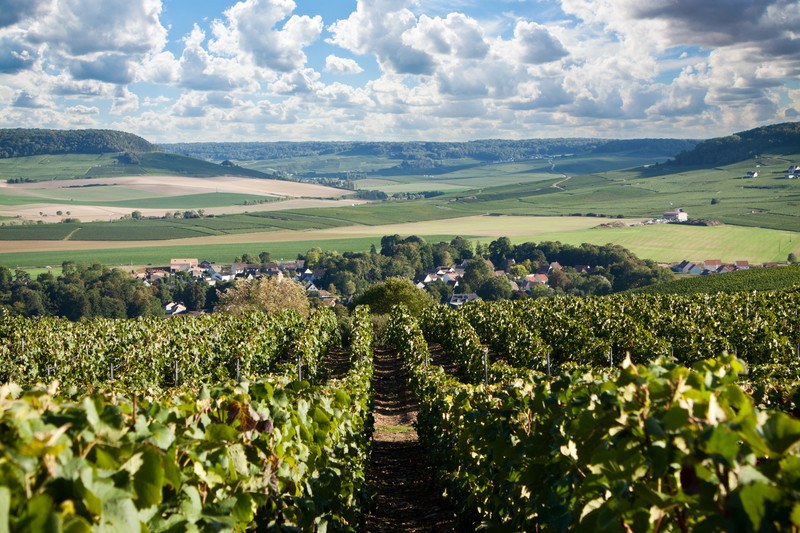
The wine that’s made from the Gamay grape isn’t as popular as many other tannin-low varieties, but that doesn’t make it any less tasty than the more well-known alternatives. Gamay wine is dry to an extent and has pretty high acidity levels. Its flavors are that of pomegranate and blackberry, unlike the cherry-like flavors of many tannin-low red wines.
One of the great things about Gamay wine is that it can be paired with a lot of dishes, so you don’t have to worry about whether or not you’re getting the most out of it in your meal.
A famous example is Beaujolais Nouveau. This red wine is produced in the Beaujolais region of France and is fermented for only a few weeks, then quickly sold. The use of Gamay grapes and lack of aging makes this a particularly low tannin wine.
Bobal
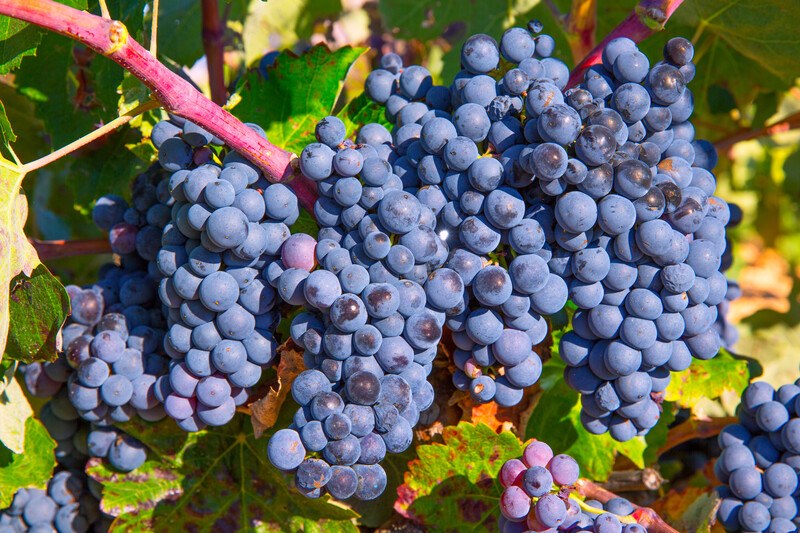
As one of Spain’s own wine grapes, Bobal is commonly used as a blend to other, more popular wines, though pure Bobal does have its own market too. Its name comes from the Latin word of “bull”, as the grapes grow in the shape of a bull’s head.
Bobal is a tough grape that can withstand droughts and buds relatively late, perfect for the Southern Spain climate. It may not be recognized as a world-class grape, but it’s definitely up there. In terms of flavor, you’ll taste hints of licorice and blackberry when sipping a glass of Bobal wine.
Cabernet Franc
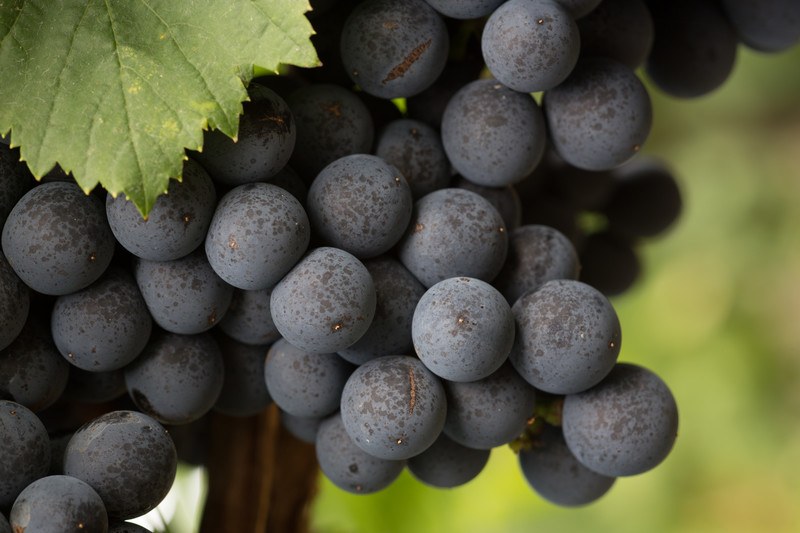
For those who were once fans of Cabernet but couldn’t handle its tannin levels, we’ve got good news for you. Cabernet Franc the lightest of the Cabernet family of wines, and although it still sports a decent amount of the substance, it’s the best alternative if you’re a fan of Cabernet. The grape is mostly grown in France, though it has seen some presence in Italy and the United States.
Cabernet Franc is fruity like the other Cabernet wines, though it does have a unique flavor to it too – many enthusiasts mention that it gives off a hint of bell pepper.
However, while Cabernet Franc is lower in tannins than Cabernet Sauvignon, it may still be higher in tannins than some of the other varieties on this list. People who are extremely sensitive may want to stick with an option like Pinot Noir rather than Cabernet Franc.
Frappato
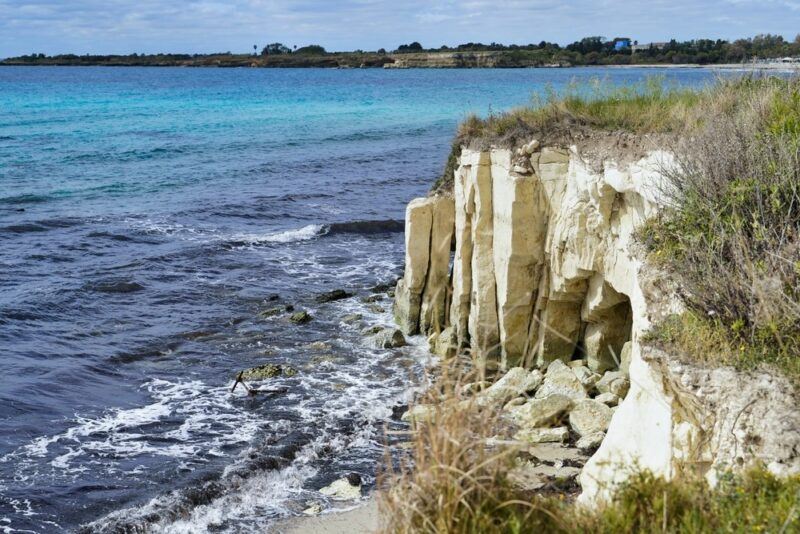
Like Bobal, Frappato is commonly blended with other grape varieties to add some complexity to the resulting wine, with its most common pair would be Nero d’Avola.
The grape is grown on the coast of Sicily alongside the region’s own Nero d’Avola, hence the frequency of pairing. Frappato is naturally low in tannins and is designed for short to mid-term cellaring. The taste of Frappato wine resembles that of both pomegranate and strawberry.
Wines made from these grapes tend to be hard to find, but are a delight if you do get your hands on them. They’re similar to a Pinot Noir in many ways and can even be enjoyed slightly chilled rather than at room temperature.
Lambrusco
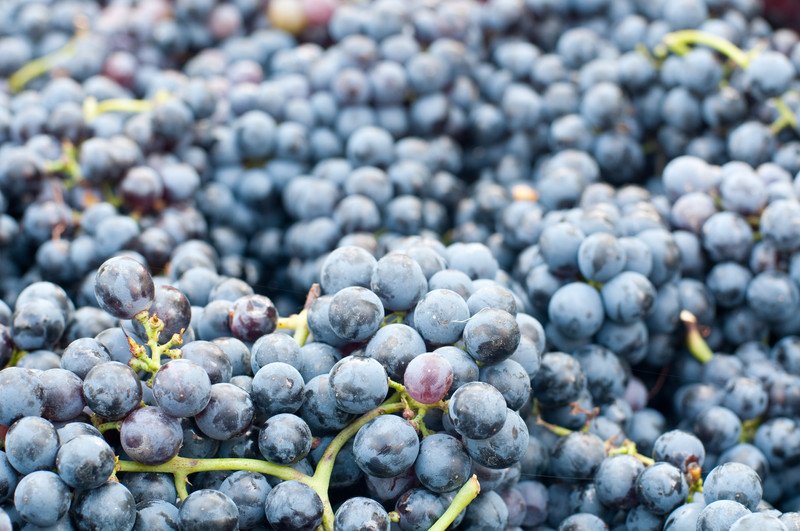
Lambrusco doesn’t just refer to a single variety of a wine grape – it’s an entire group of varieties, each with their own unique properties, and are all found primarily in Italy. While some Lambrusco varieties contain good amounts of tannin in them (such as Lambrusco Grasparossa), others have only a few of it like Lambrusco di Sorbara, which is said to be the variety with the lowest tannin levels in the family.
Different Lambrusco varieties consist of different sweetness and dryness levels, though some stand out more than others. For example, Sweet Lambrusco was a popular wine in the 1980s.
Because there are so many different varieties, you’ll need to pay close attention to the specific wine you choose. A sparkling Lambrusco di Sorbana is a particularly good option, if you can find it.
Etna Rosso

Etna Rosso is a wine with its grapes grown in Sicily’s very own Mt. Etna, the same place where other varieties such as the Frappato are grown. The grapes are Nerello Mascalese, a variety that’s started to see a resurgence in popularity. Like all the other wines on this list, Etna Rosso isn’t that high on tannins and joins the family of light, fruity red wines.
In terms of taste, Etna Rosso shares many similarities with the famous Pinot Noir, but at a cheaper price point. It’s got the same sweetness, acidity, and lightness as many famous red wine varieties.
Final Thoughts
To sum it all up, red wines usually are pretty high in tannins, due to the amount that’s naturally found in grape skin. It also comes from storing the wines in oak barrels.
That doesn’t mean low tannin options don’t exist in the market, though, with many red wine varieties offering lower amounts of tannin than normal. You don’t have to turn to white wine for a low tannin experience, and the many different options to choose from serve as a testament to that.
Why Haven’t We Listed Tannin Levels?
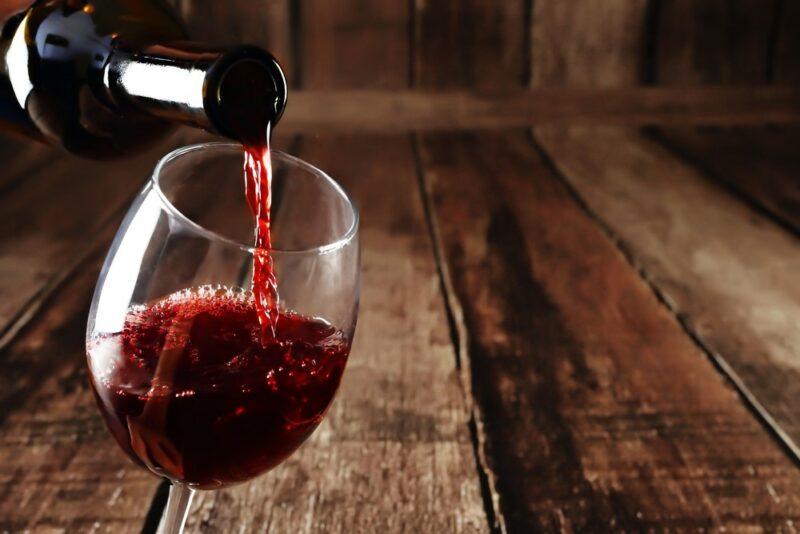
You may have noticed that this list provides few specifics about the tannins in each of these wines. We don’t tell you the specific levels of tannins or even how the various wines compare to each other.
That’s because there’s an incredible amount of variation. The tannin content will be different from one vineyard to another. Different vintages often vary in their content too. The tannins mightn’t even be the same from one bottle to the next within the same batch.
As such, any list of tannin levels would be an incredible approximation. It would be misleading too, which is why we’ve avoided the approach entirely.
Some winemakers have started to use the Total Polyphenol Index. This helps matters, as it is a measure of the tannins in wine. However, the approach is still limited and doesn’t tell you anything about how well you’ll be able to detect the tannins in your wine. Many winemakers don’t use this index anyway and those that do may not publish the results – so the approach doesn’t really help wine drinkers.
Does Cheap Red Wine Have More Tannins?
Interestingly, cheap wine might have fewer tannins than more expensive wines. This is because the vineyards are often focused on increasing yield and profits as much as possible, which can lead to lower quality grapes with fewer polyphenols.
Cheaper wines may have been through less aging in oak barrels as well, which should also help to keep the tannin levels low.
However, this doesn’t mean that every cheap red wine will have fewer tannins than every expensive one. There’s still plenty of variation. Some companies might even add tannins into their cheap red wines, so it’s always important to check.
Should You Avoid Tannins?
As we’ve discussed elsewhere, tannins aren’t inherently bad for you. They even offer some health benefits, such as supporting healthy blood pressure, reducing oxidation, and helping your immune system.
Most issues happen if you’re very sensitive to tannins or are consuming large amounts of them. These situations might lead to notable side effects, like nausea or a splitting headache. Some people even get migraines from tannins, particularly if they experience migraines regularly anyway.
If you do experience such side effects, focusing on low tannin wines is a good idea. This could include some of the reds we’ve featured on this list or perhaps a bottle of white wine instead.
But, before you do so, try taking the time to experiment. Doing so is important, as some of the effects you experience mightn’t come from tannins at all. For example, some people get headaches from the sulfites in wine, rather than tannins. A good indication is whether you experience similar side effects from other high tannin drinks (like black tea). If you don’t, then the tannins probably aren’t to blame.










 7 Ways To Turn Your Gas Grill Into An Outdoor Pizza Oven
7 Ways To Turn Your Gas Grill Into An Outdoor Pizza Oven
Great list to choose from. I get nosebleeds when I drink red wine (which I love) so I am hoping that this list will make a difference. Thank you.
I haven’t heard of that! And you think it’s from the tannins?
I do as well. Nice to know I am not alone. Maybe it is the tannins or sulphites, both bother me in some wines.
Honestly this entire article is basically repeating “kinda low tannins” and then not even mentioning the tannin level in a bunch of the others. So I’ve left this article not really knowing anything more than when I arrived. I would have appreciated an actual comparison with known tannin levels using some sort of control, like no oak storage for continuity. What’s the lowest among this group? Whats the highest tannin level among this group? And where do the others fit in between? These are the answers to the question in the title of this article, which now remains unanswered.
Tannin levels will ALWAYS vary based on wine maker, and each person perceives tannins differently. There are some winemakers which are starting to use some tannin measurements, but it’s not universal, so it would be impossible to list every single version of every single style of wine and the tannin levels. This is just a guideline to get you started.
Good one Bob, I too looked for the answer in each article??
The article title is “Which Red Wines Have The Least Tannins?”, and delivers a list. The title is not “Tannin Levels by Wine Chart” or “A Comparison of Tannins in Wines”.
Bob, you’re an egotistical ignorant ass who thinks he’s a wine snob but is dead wrong. The article delivered on what the title said. Shit up and stick a wine cork up your ass.
Is Malbec a relatively low-tannin variety? My husband has Menieres and tannin definitely affects it.
I enjoyed the article very much